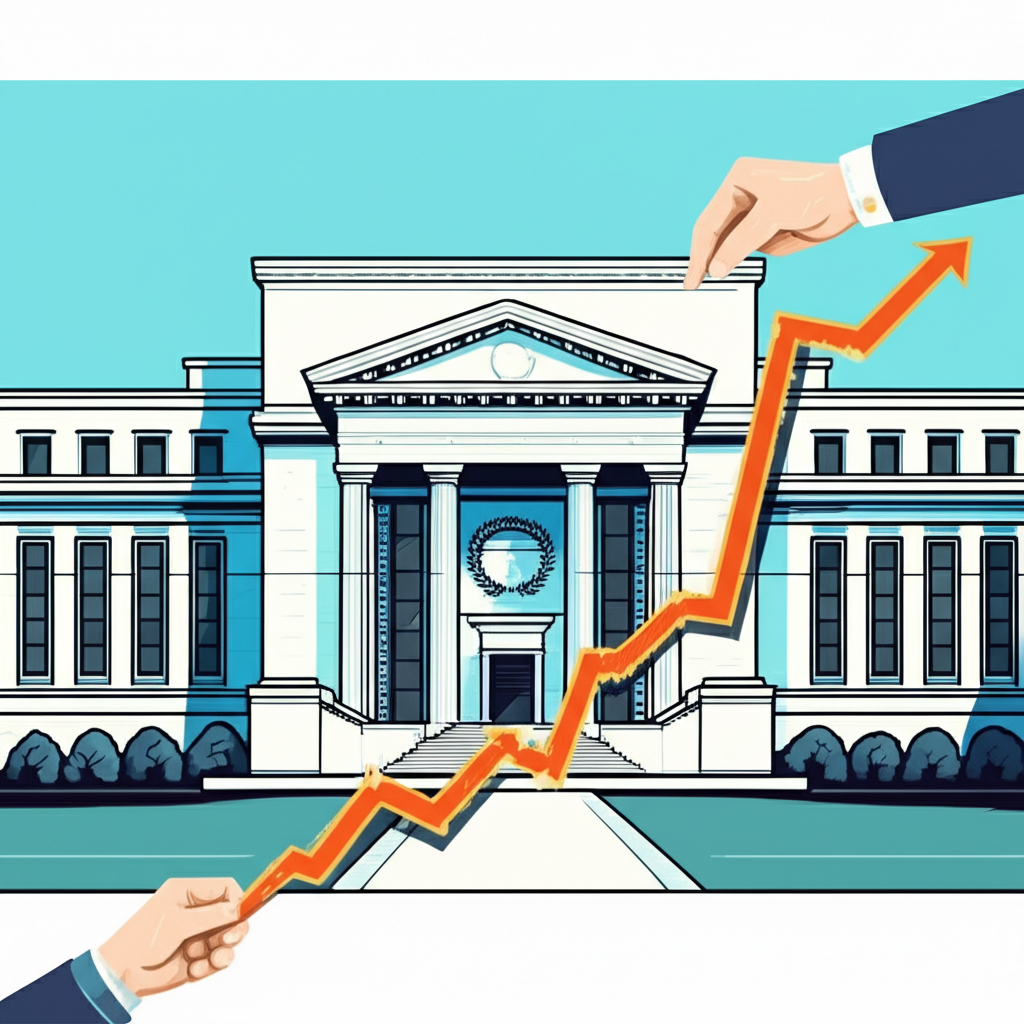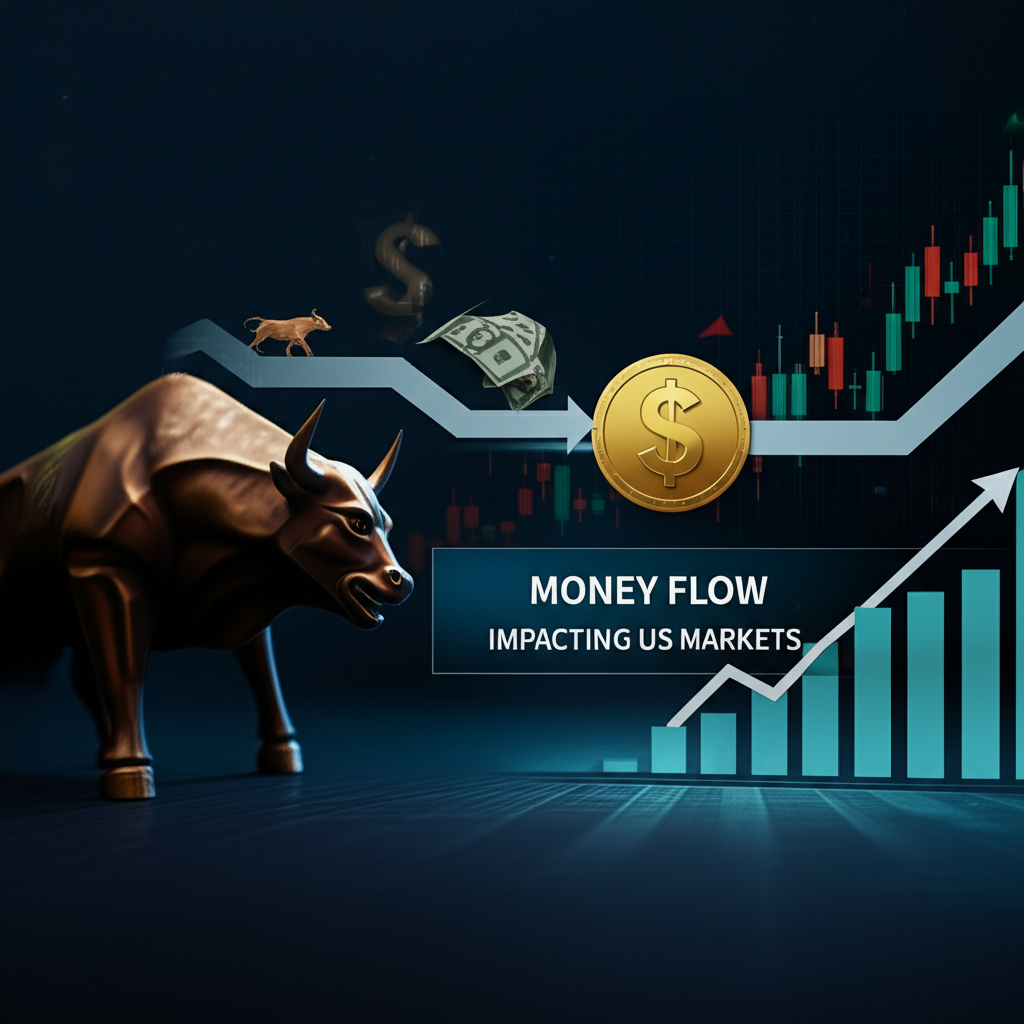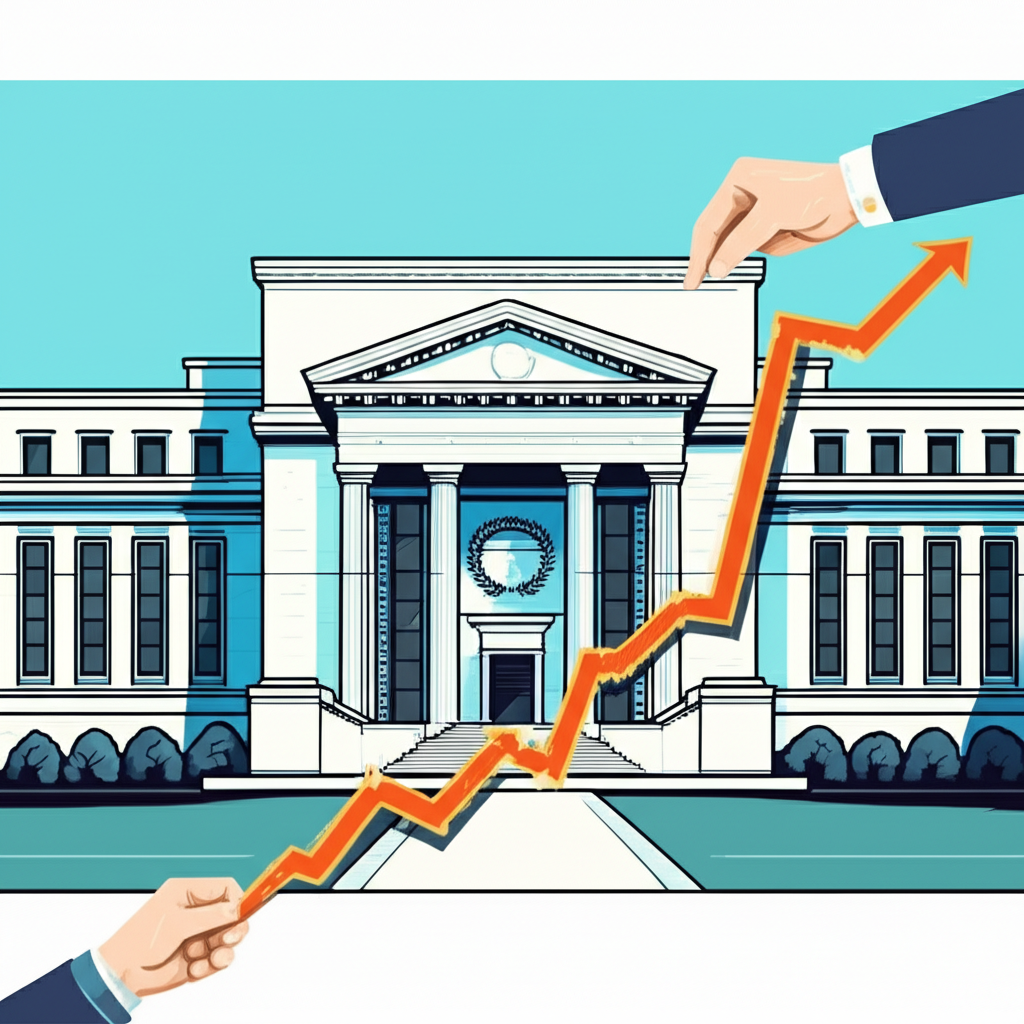Introduction: The Unseen Hand – How Interest Rates Drive US Markets in 2025
Interest rates serve as the heartbeat of the US economy, quietly shaping decisions across finance and daily life. For American investors, traders, and families, grasping these rates’ movements becomes essential heading into 2025. Even small changes in borrowing costs or savings returns can alter company finances, household spending, and international capital flows, transforming the dynamics of US stock, bond, and forex markets. This guide explores these connections in depth, providing insights to help you prepare for the shifting economic terrain ahead.

By examining the Federal Reserve’s actions and their ripple effects, you’ll gain a clearer view of how to position your portfolio. Whether you’re tracking Wall Street indices or global currency pairs, these influences will play a pivotal role in market trends throughout the year.

The Federal Reserve’s Role: Steering US Interest Rates
The Federal Reserve, or the Fed, stands as the central force behind US interest rate decisions. As the country’s central bank, it works to create a secure, adaptable, and steady monetary system, guided by its dual goals of promoting full employment and keeping inflation in check.
The Fed’s main lever for guiding rates is the Federal Funds Rate, which sets the target for overnight loans between banks. Adjustments here quickly affect short-term rates and, over time, longer ones like those for home loans or business borrowing. The bank also uses quantitative easing-purchasing government bonds to add cash to the system-or quantitative tightening, selling them to pull money back, to shape long-term rates and overall liquidity. Hiking the Federal Funds Rate tightens policy to fight rising prices, while cuts ease conditions to spur growth. Mastering these tools helps predict how markets might respond. For a closer look at the Fed’s approaches, check the Federal Reserve’s official website.
Impact on the US Stock Market: A Direct Correlation
Interest rates and the US stock market share a close, complex link that investors ignore at their peril. People always compare stocks to alternatives like bonds or cash, and rates tip the scales in that comparison.
Rising Interest Rates and Stock Performance
As the Fed increases rates, a series of pressures build in the equity markets:
- Higher Borrowing Costs for Corporations: Businesses frequently use loans for daily operations, growth initiatives, or repurchasing shares. When rates climb, the expense of variable-rate debt rises, squeezing profits and earnings per share.
- Increased Discount Rates for Future Earnings: Valuing stocks involves calculating the current worth of expected future profits. Elevated rates raise the discount factor, shrinking those values and pulling down stock prices.
- Shift from Stocks to Bonds: Higher rates make bonds more appealing with better yields and less volatility, drawing money away from stocks-particularly among risk-averse savers.
- Sectoral Impacts: Reactions vary by industry. Tech-heavy growth stocks, dependent on long-term projections and borrowing, suffer most. In contrast, value stocks, banks (which gain from wider lending spreads), and sectors like energy or commodities often hold up better or even advance.
Falling Interest Rates and Stock Performance
On the flip side, dropping rates usually lift stocks through several channels:
- Lower Borrowing Costs: Cheaper loans cut interest payments for firms, freeing up cash and potentially lifting bottom lines.
- Reduced Discount Rates: With lower rates, future profits look more valuable today, propping up stock prices.
- Fixed Income Less Attractive: Diminished bond returns drive capital toward equities for better potential gains.
- Stimulus for Economic Growth and Consumer Spending: Easier borrowing for homes, cars, and credit encourages outlays that fuel company sales and broader expansion.
Key Metrics for US Investors in 2025
Heading into 2025, keep an eye on price-to-earnings (P/E) ratios against past norms and growth forecasts. Also, weigh stock dividend yields against benchmarks like the 10-year Treasury yield to gauge if equities stack up well against bonds. If bond yields pull far ahead of dividends, it could signal investors fleeing stocks.
Interest Rates and the US Bond Market: An Inverse Relationship
Bonds respond straightforwardly to rate shifts: prices move opposite to rates. Rising rates push existing bond prices down, while falling rates send them up.
New bonds carry coupon rates tied to current conditions. If rates rise afterward, fresh issues pay more, making older, lower-paying bonds less desirable. Their prices then drop until yields align with new offerings-for instance, a 3% bond might lose value so a buyer gets an effective 4% return matching the market.
Yield Curve Dynamics
The yield curve charts returns for similar-quality bonds at different terms. Normally, it rises from short to long maturities, accounting for added time and uncertainty. An inversion, with short-term yields topping long-term ones, frequently foreshadows downturns. In 2025, the curve’s form will signal views on growth and price pressures ahead.
Impact on US Treasury Bonds, Corporate Bonds, and Municipal Bonds
This push-pull dynamic affects all bond types:
- US Treasury Bonds: Backed by the government’s promise, these safest options react sharply to Fed moves and economic moods.
- Corporate Bonds: From companies, they add default risk to rate sensitivity, so yields exceed Treasuries as compensation.
- Municipal Bonds: Local and state issues often bring tax breaks, appealing to certain buyers with after-tax yields that stand out.
Bonds anchor portfolios as refuges in turbulence and reliable income sources. Knowing their rate vulnerabilities aids in maintaining balance. To understand yields better, see Investopedia’s explanation of bond yield.
The Forex Market in the United States: Leveraging Interest Rate Differentials
Interest rate gaps between nations powerfully sway the forex market. Central banks’ rate policies drive currency values and swings, especially in the US dollar’s global role.
Carry Trade Strategies
The carry trade exploits these gaps by borrowing low-rate currencies to invest in high-rate ones. If US rates outpace Japan’s, traders might borrow yen to buy dollars, pocketing the spread. Such demand bolsters the stronger currency. As global banks tweak policies in 2025, these setups will shift, affecting pairs like USD/EUR and USD/JPY.
Central Bank Policies and Currency Volatility
Fed updates on rates or plans can jolt the dollar versus peers. A surprise hike draws inflows, firming the USD; a softer tone weakens it. Moves by the European Central Bank or Bank of Japan similarly sway EUR/USD and USD/JPY.
Implications for US Forex Traders in 2025
American forex participants should watch for policy splits worldwide. Nations tightening rates offer trade edges over those easing, but exchange risks can offset gains if currencies flip unexpectedly. Blend rate forecasts with inflation trends, economic data, and world events for solid plays.
Brokers for Interest Rate-Sensitive Forex Trading in the US
Selecting a dependable broker helps US traders seize rate-driven forex chances. Below are standout choices:
| Broker | Key Advantages for US Traders | Regulation |
|---|---|---|
| 1. Moneta Markets | Highly competitive spreads across a wide range of currency pairs, robust trading platforms (MT4/MT5, WebTrader) suitable for both beginners and experienced traders, extensive educational resources, and responsive customer support. Its strong regulatory framework across multiple jurisdictions, including an FCA license, makes it ideal for US traders looking to capitalize on interest rate differentials and currency movements in 2025. | FCA, FSCA, FSA, etc. |
| 2. OANDA | Known for competitive pricing, advanced charting tools, and a wide array of research and educational content. OANDA offers a reliable platform suitable for both novice and experienced US traders seeking comprehensive market analysis. | NFA (US), FCA (UK), ASIC (AU), etc. |
| 3. FOREX.com | Offers a powerful trading platform, access to numerous markets beyond forex (including indices, commodities), and comprehensive research. Its robust features appeal to US traders seeking diverse trading options and strong analytical tools. | NFA (US), CFTC (US), FCA (UK), etc. |
| 4. IG | A global leader with a vast product offering, advanced trading tools, and excellent educational materials. IG caters to sophisticated US traders looking for extensive market access and powerful analytical capabilities. | CFTC (US), NFA (US), FCA (UK), etc. |
Broader Economic Ripple Effects Across the United States in 2025
Interest rates extend far beyond trading floors, touching American households, businesses, and growth outlooks in profound ways.
Inflation and Purchasing Power
The Fed deploys rates chiefly to tame inflation. High prices prompt hikes that raise borrowing hurdles and reward saving, curbing demand and easing pressures. In 2025, inflation fights will guide Fed choices, shaping the dollar’s real value for everyday Americans.
Consumer Spending and Borrowing
Rate changes hit personal finances hard. Elevations bring:
- Mortgages: Steeper costs for fixed or adjustable home loans, straining affordability and cooling the housing sector.
- Credit Card Rates: Bigger charges on balances, hiking the burden of revolving debt.
- Auto Loans and Personal Loans: Larger payments that might delay major buys like vehicles or renovations.
Lower rates, however, spur loans and spending, energizing the economy.
Business Investment and Growth
Companies weigh borrowing costs when planning expansions or innovations. Affordable rates enable funding for equipment, R&D, or hiring, driving jobs and progress. Steeper costs can stall these, slowing momentum and payrolls.
Real Estate Market
Mortgage rates make or break US housing. Rising ones inflate ownership expenses, curbing demand and tempering price gains. Drops, meanwhile, spark refinancings and sales rushes, lifting values. Rate paths in 2025 will largely determine the sector’s health.
Strategies for US Investors and Traders in Different Interest Rate Environments (2025 Outlook)
Tailoring approaches to rate trends will prove vital for thriving in US markets next year.
When Rates Are Rising
During hikes, lean into:
- Focus on Value Stocks: Firms with solid finances, steady income, and minimal debt tend to endure.
- Financial Institutions: Lenders profit from expanded spreads between deposit and loan rates.
- Energy and Commodities: These act as buffers against inflation, gaining as rates target price rises.
- Shorting Bonds: Savvy traders can profit by betting against bonds as values dip.
- Utilizing Forex Pairs with Positive Carry: Spot currencies yielding more than the USD, especially if the Fed trails others, for carry potential.
When Rates Are Falling
As rates ease, pivot to:
- Growth Stocks and Technology: These flourish with cheap funding and boosted future-profit valuations.
- Real Estate: Affordable mortgages drive demand and appreciation.
- Long Bonds: Purchasing ahead of further drops captures price gains.
- Hedging Strategies: In forex, protect against dollar slides from aggressive Fed cuts.
Diversification and Risk Management
No matter the rate direction, spreading holdings across stocks, bonds, property, and alternatives cuts exposure. Advanced users might employ options or futures to shield against surprises. Track Fed statements and key data to refine positions dynamically.
Conclusion: Adapting to the Evolving US Interest Rate Landscape in 2025
Interest rates weave through every layer of US finance, from bond math to business earnings and currency flows. In 2025, the price of capital will mold choices across markets. American investors and traders who follow Fed signals, foresee responses, and adjust tactics stand to gain. Through vigilance, balanced assets, and reliable platforms, you can steer through these changes effectively.
Frequently Asked Questions (FAQ) about Interest Rates and US Markets
How will interest rates affect the stock market in the United States in 2025?
In 2025, if interest rates rise, the US stock market could face headwinds due to higher corporate borrowing costs, reduced future earnings valuations, and a shift of investor capital to more attractive bonds. Conversely, falling rates would likely boost stock performance by lowering borrowing costs, increasing valuations, and making stocks more appealing than fixed income. The specific impact will depend on the pace and magnitude of rate changes, and economic conditions.
Is it good to buy stocks when interest rates are high in the US?
Buying stocks when interest rates are high in the US can be a nuanced decision. While high rates generally create a less favorable environment for equities, certain sectors like financials (banks benefit from higher lending margins) or value stocks might perform better. It’s crucial to focus on companies with strong balance sheets, low debt, and robust cash flows that can weather higher borrowing costs. Diversification and a long-term perspective are key.
What stocks go up when interest rates go down in the US?
When interest rates go down in the US, growth stocks, particularly in technology and other sectors that rely on future earnings potential, tend to perform well. Lower rates reduce the cost of borrowing for these companies and increase the present value of their projected future profits. Real estate stocks and companies with high debt loads also often benefit from cheaper financing.
What is the 7% rule in stock trading, and how does it relate to US interest rates?
The “7% rule” is not a widely recognized or formal rule in stock trading directly tied to interest rates. It might refer to various specific investment heuristics or internal guidelines. However, in a broader sense, investors often compare a stock’s dividend yield to the prevailing risk-free rate (like the 10-year US Treasury bond yield). If a stock’s dividend yield significantly lags bond yields, it might be less attractive. The general principle is that as interest rates rise, the hurdle rate for equity returns also increases, requiring stocks to offer higher expected returns to remain competitive.
What is the positive impact of interest rates on markets?
While rising rates can be challenging for some markets, they have positive impacts too. For bond investors, new bonds offer higher yields, providing better income. For savers, higher interest rates mean greater returns on savings accounts, CDs, and money market funds. In the stock market, financial institutions like banks can see improved profitability from higher net interest margins. Additionally, higher rates are often a tool to combat inflation, which, if successful, can lead to a more stable economic environment in the long run.
How does a Fed rate cut impact the US stock market?
A Fed rate cut generally has a positive impact on the US stock market. Lower interest rates reduce borrowing costs for companies, which can boost corporate profits. They also make fixed-income investments less attractive, encouraging investors to seek higher returns in stocks. Furthermore, lower rates can stimulate consumer spending and business investment, fostering overall economic growth which benefits equities.
Where can I find a Fed interest rate vs. stock market chart for the US?
You can find charts illustrating the historical relationship between the Fed Funds Rate and the US stock market (e.g., S&P 500) on various financial data websites. Reputable sources include the Federal Reserve Economic Data (FRED) database from the St. Louis Fed, Bloomberg, Yahoo Finance, and financial news sites like The Wall Street Journal or Reuters. These platforms often allow you to overlay different economic indicators for comparison.
What is the impact of interest rates on US currency markets for forex traders?
Interest rates significantly impact US currency markets for forex traders through interest rate differentials. If the Federal Reserve raises rates relative to other major central banks, the US dollar tends to strengthen as it attracts foreign capital seeking higher returns (carry trade). Conversely, if the Fed cuts rates or signals a dovish stance, the dollar may weaken. Forex traders actively monitor Fed announcements and economic data to anticipate these shifts. Brokers like Moneta Markets, with their competitive spreads and comprehensive currency pair offerings, are essential for US forex traders looking to effectively capitalize on these interest rate-driven movements.



No responses yet